Channel Islands National Park is truly one of California’s best hidden gems. Sitting just off the mainland of Southern California, this string of five islands provides a peek into the land as it existed untouched for millennia. The list of things to do in Channel Islands is extensive, with everything from hiking, kayaking, and snorkeling, to camping, whale watching, and scuba diving.
This guide highlights the top things to do in Channel Islands, including the best islands to visit for each activity.
Jump to:
- Overview
- Hiking
- Camping
- Kayaking, Paddle Boarding, and Snorkeling
- Sea Caves
- Scuba Diving
- Whale Watching
- Seal and Sea Lion Viewing
Overview
Getting to Channel Islands National Park
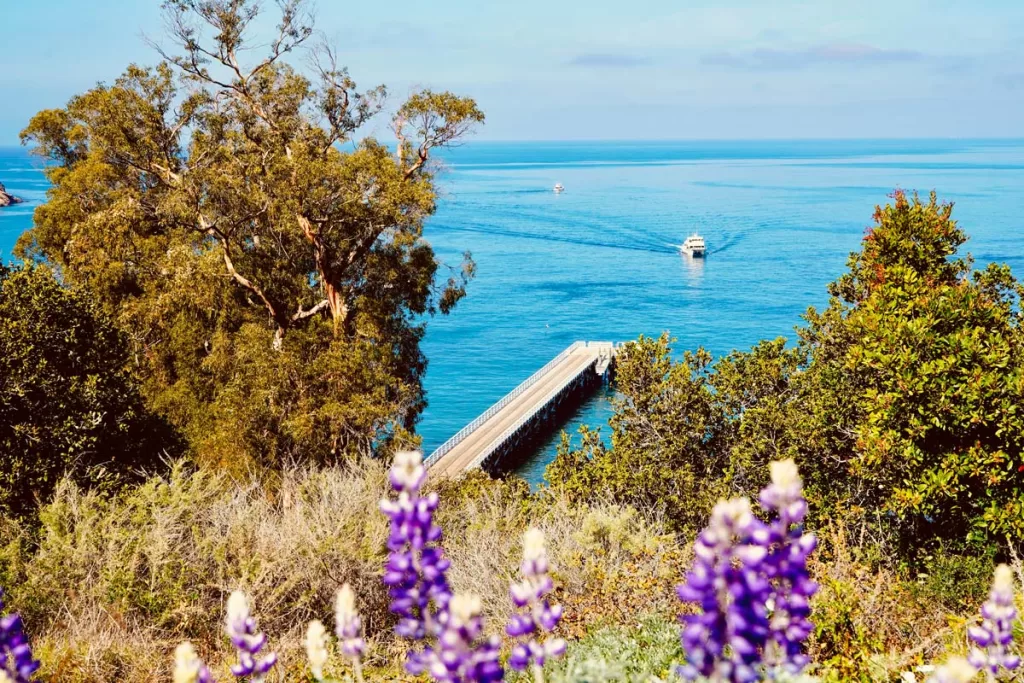
You can get to any of the five islands via ferry from Ventura Harbor. All trips are operated by Island Packers, the official boat partner of the National Park Service.
Island Packers offers year-round transportation to both Santa Cruz and Anacapa islands. However, trips to the three more remote islands only run between March – November each year.
We strongly recommend booking your tickets online in advance, as ferries can sell out during the high season.
Amenities
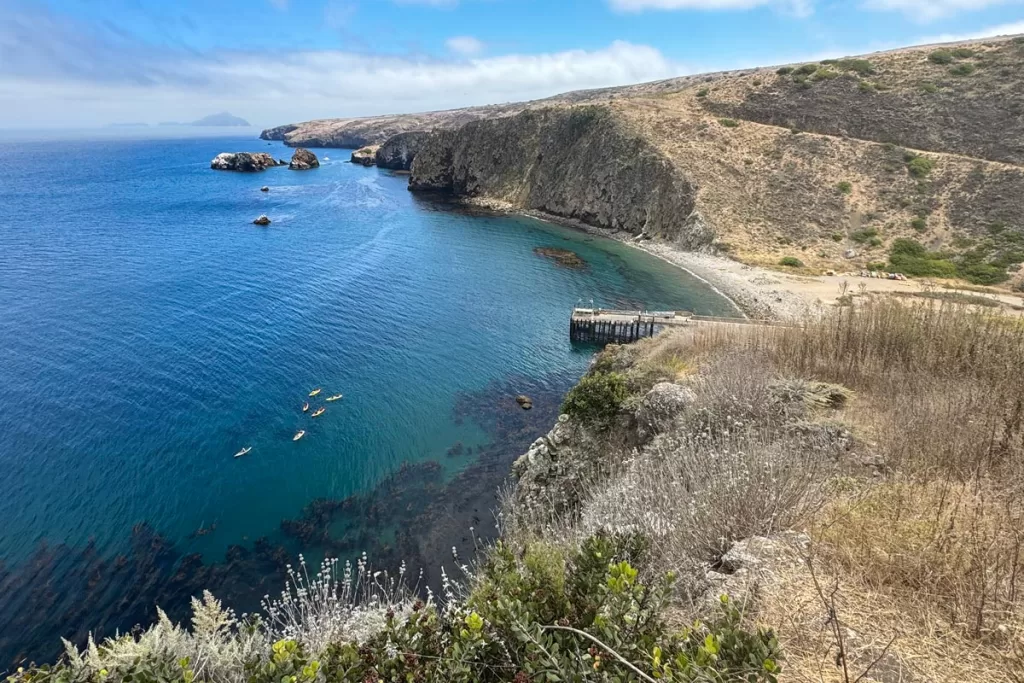
There are no amenities on any of the islands: no dining options or convenience stores, and oftentimes no water.
Drinking water is only available at the developed campsites on Santa Cruz Island (at Scorpion Harbor) and Santa Rosa Island (at Water Canyon).
Plan to bring your own food, water, and anything else you need for extended time in an arid environment (such as sun protection).
Hiking
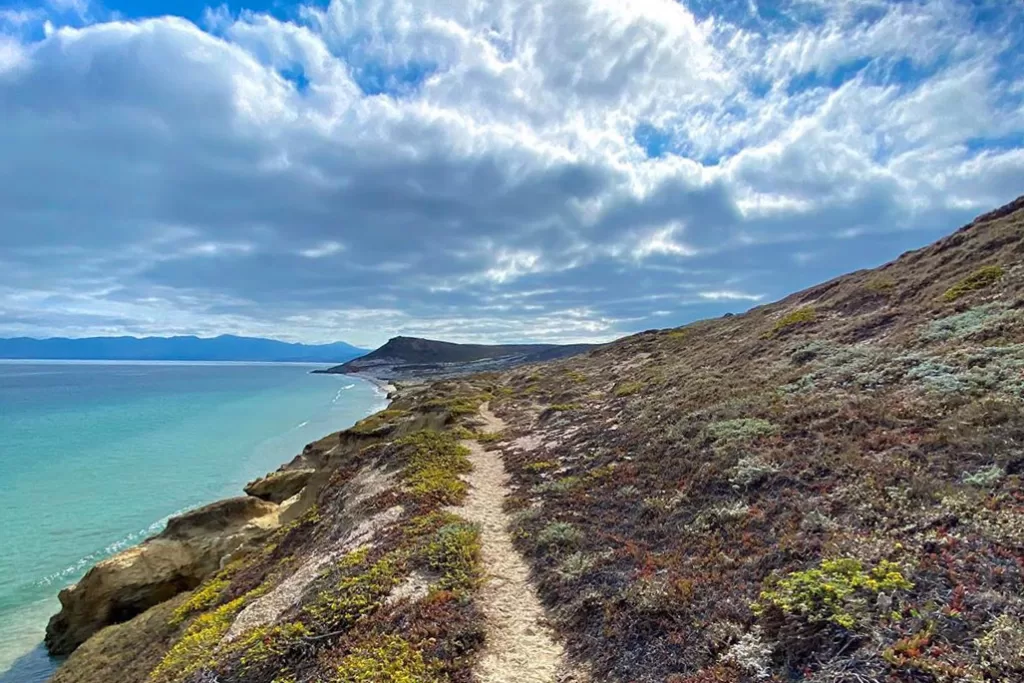
There’s a trail for everyone in Channel Islands, ranging from short loops to extended day hikes. Nearly every trail offers up first-rate views along the islands’ rugged coastlines.
Some of the most popular trails among the five islands include:
- Inspiration Point (Anacapa): arguably one of the most famous images of the Channel Islands, Inspiration Point looks out over the dotted archipelago that makes up Anacapa Island. 1.5 – 2.5 miles roundtrip, depending on the loops.
- Cavern Point (Santa Cruz): a short-but-steep uphill from Scorpion Harbor will quickly get you to a stunning promontory, with the ocean far below and the island’s historic 1800s ranch tucked back into the hillsides. 2 miles roundtrip.
- Potato Harbor (Santa Cruz): with only a short initial burst of incline, this trail then meanders along fragrant, sage-lined ocean bluffs, with picturesque inlets dotting the seascape below. The end point, Potato Harbor, is a stunning cove with dazzling aquamarine waters and dramatic cliffs. The Cavern Point trail (above) is also part of the larger Potato Harbor loop. 5.2 miles roundtrip.
- Torrey Pines Trail (Santa Rosa): there are only two groves of the rare Torrey pine in the world, and this trail leads you to one of them. Along the way, you’ll also get prime views of Becher’s Bay. 6.5 miles roundtrip.
- East Point (Santa Rosa): this is one of the most popular “long-distance” hikes within the park. It covers all of Santa Rosa’s top highlights, including both the white-sand beaches and the famed Torrey pines. 14.5 miles roundtrip.
Note that the natural scrub brush of the islands’ landscape has little shade, so hiking is always exposed. Bring plenty of water and sun protection, even on short hikes.
Camping
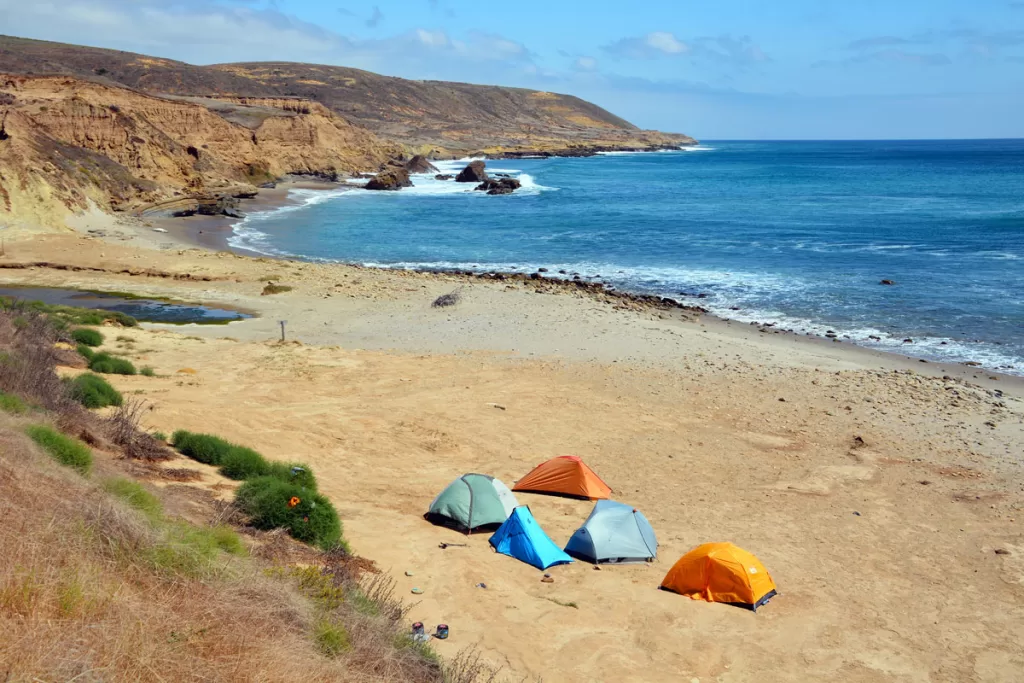
Camping is available on all five islands within the national park, including both campsite and backcountry options.
- The best developed campgrounds are Scorpion Harbor (Santa Cruz Island) and Water Canyon (Santa Rosa Island), both of which have potable water on-site.
- There are also smaller campgrounds on Anacapa, San Miguel, and Santa Barbara islands, although none of these have potable water.
- Additionally, more adventurous campers can take advantage of the multiple backcountry options for a truly off-grid experience. Del Norte (on Santa Cruz Island) and Santa Rosa Island’s remote beach camping are two particular highlights.
All camping, both in developed sites and backcountry, can be reserved through recreation.gov. There is no transportation on any of the Channel Islands, so you’ll need to carry all gear from the boat dock to the campsite.
Our guide to Channel Islands camping covers each island’s camping options in greater detail.
Kayaking, Paddle Boarding, and Snorkeling

One of the national park’s best assets is its vibrant ocean ecosystem, which is designated a National Marine Sanctuary. Just offshore, you’ll find giant kelp forests and nearly 350 species of fish, along with seals, sea lions, dolphins, whales, and more.
The best way to explore this watery preserve is either by kayak, paddle board, or snorkeling.
Some of the best spots for kayaking, paddle boarding, and snorkeling include:
- Santa Cruz: the waters off Scorpion Harbor are the most easily accessible of any of the islands. This is also the only place to rent kayaks or snorkels within Channel Islands National Park. Otherwise, you can opt for a guided tour, where local guides will share their love of the water and help you get the most out of your outing.
- Anacapa: smaller Anacapa island offers a similar kayaking experience to Santa Cruz, with crystal clear waters and vibrant kelp forests. However, it takes a bit more planning, as there’s only one water access point (at Landing Cove) and no rentals available.
(Due to strong ocean currents and weather conditions, water activities on other islands is recommended only for the most experienced.)
Sea Caves
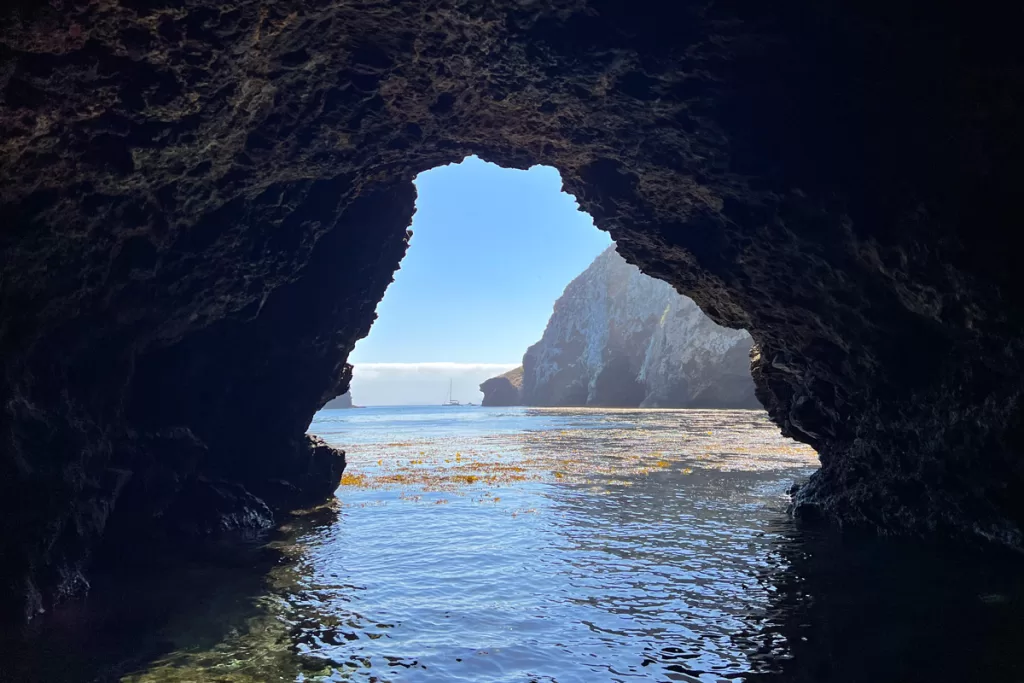
One of our personal favorite attributes of Channel Islands National Park is the abundance of sea caves. Over millennia, the ocean has carved these natural wonders into the steep cliffs rising high above the water line. You can explore the park’s sea caves via either kayak or paddle board.
- Santa Cruz, Scorpion Harbor: you can launch watercraft directly from the beach, making Scorpion Harbor the most easily accessible. From shore, head in either direction. To the southeast, there are less caves but the waters are calmer – there’s still one particularly fun cave on this side. Alternatively, paddling northwest will bring you into stronger waters, but there are multiple caves to explore between here and Cavern Point. If you don’t have your own watercraft, you can also book a guided tour via Santa Barbara Adventure Company.
- Santa Cruz, Painted Cave: on the far northwestern coast of Santa Cruz sits Painted Cave, the world’s fourth-largest sea cave. It’s the size of four football fields, and truly a natural wonder. However, you can only visit via an organized tour. Island Packers offers excursions via the Prisoner’s Harbor route, and also stops on each return from Santa Rosa island, conditions permitting.
- Anacapa: with more sea caves per mile than any other island, Anacapa provides the most bang for your buck. While the only ocean access point is at Landing Cove, once on the water you can explore numerous caves and sea arches in either direction. You can either bring your own watercraft, or book a guided sea cave tour. Explore Channel Islands offers regular excursions, departing from Oxnard.
Scuba Diving
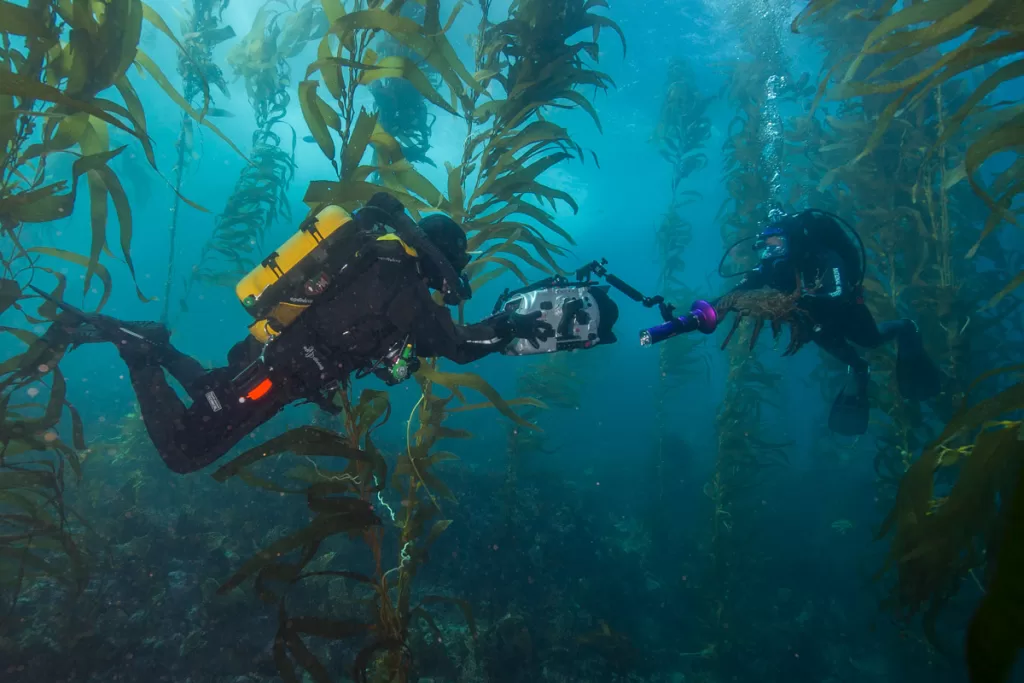
The vibrant ecosystem just offshore offers a first-rate diving experience. Here, you’ll see abundant kelp forests, home to everything from seals and sea lions to California’s state fish, the cheerfully bright orange Garibaldi.
- To experience the classic California kelp forest, the calm waters off the coast of either Anacapa or Santa Cruz are each a great option. Both islands have rich marine life, and the healthy kelp beds create crystal clear waters with high visibility.
- You can also book a dive trip to distant Santa Barbara Island. It’s a more extensive trip, but uniquely special experience. Visibility isn’t always as strong, but Santa Barbara is home to a huge rookery of seals and sea lions, and you’ll be accompanied with hundreds of playful pinnipeds. Sometimes called the “puppies of the sea”, they have as much fun swimming with you as you do with them. Just be careful of them playfully grabbing your mask off your face – it wouldn’t be the first time it’s happened.
Most dive trips are run through independent operators. Spectre and Ventura Dive, both based out of Ventura Harbor, lead frequent trips to Santa Cruz and Anacapa islands.
Santa Barbara dive trips can be slightly harder to find, but Ocean Safari Outdoors or California Dive Charters are a good place to start.
Whale Watching
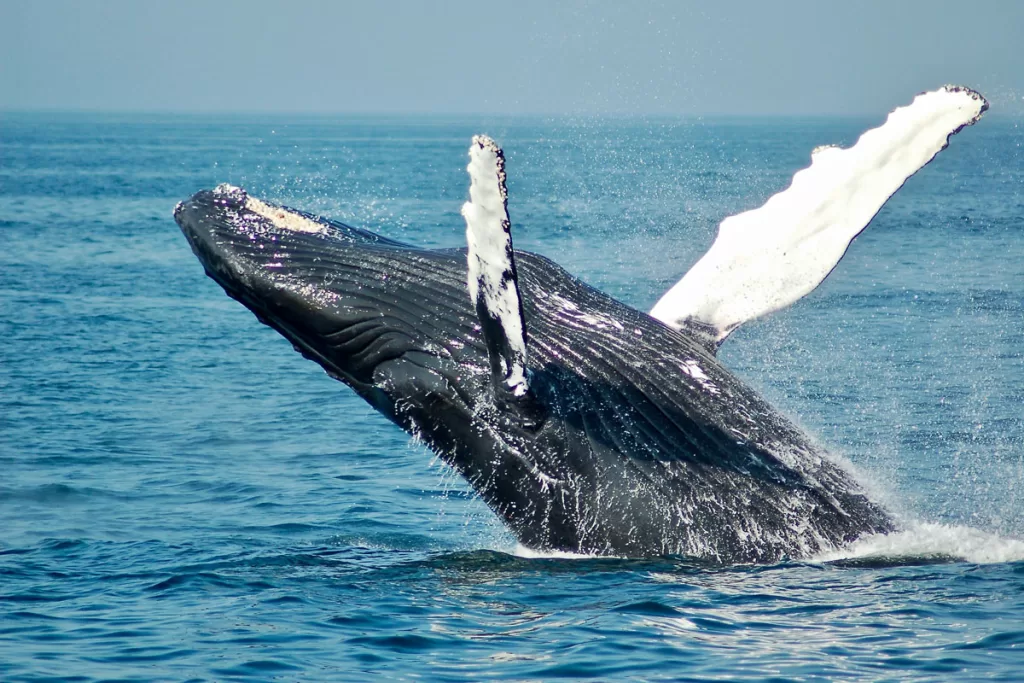
A fascinating statistic: 27 different species of whales, dolphins, and porpoises – one third of the world’s total – can be found in the waters off the Channel Islands.
This high population allows for nearly year-round viewing of the various migrations, from gray whales in the winter and spring, to humpback, fin, and blue whales in the summer and fall.
You can book whale watching excursions via Island Packers. But even if you don’t book a specialty trip, there’s still a high likelihood that you’ll at least see one of the many large dolphin pods who reside in the channel, on your boat ride to or from the islands.
Seal and Sea Lion Viewing
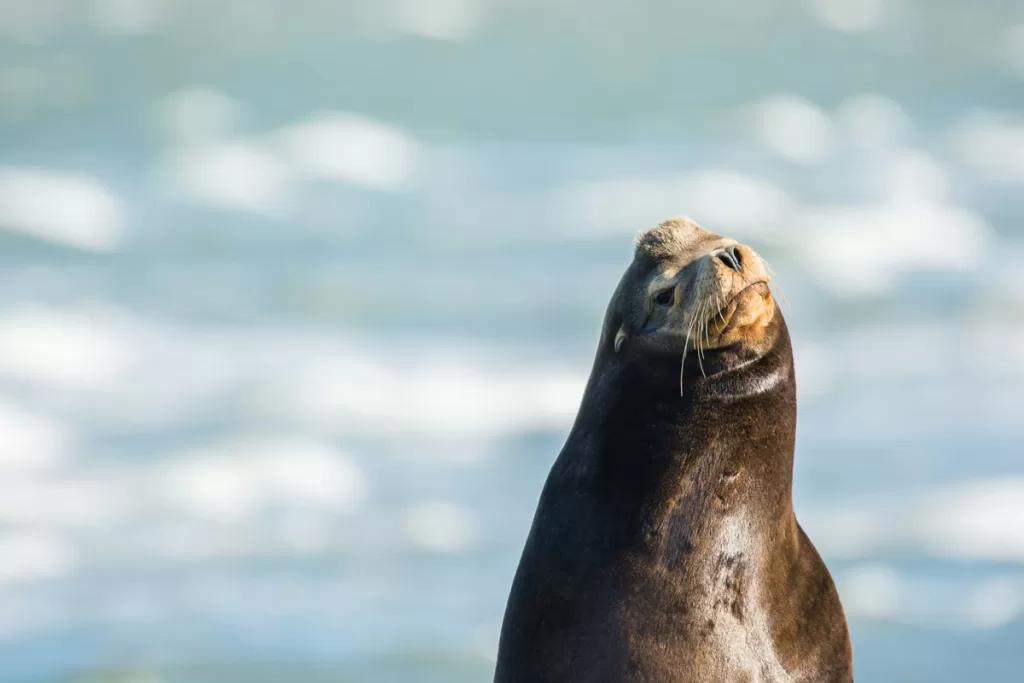
Sea lions, harbor seals, fur seals, and elephant seals all call the Channel Islands home, and you can see some combination of the four on any of the islands.
Ironically, the two best options for pinniped viewing are the two most remote islands.
- San Miguel: the westernmost island in the chain, San Miguel sees hundreds of thousands of seals and sea lions flock to its shores each year. While you can spy the animals throughout the park (including elephant seals at Cuyler Harbor, where the boat docks), the most famous viewing spot is Point Bennett, accessible via a 15-mile roundtrip, ranger-led hike. This is one of the world’s largest congregations of wildlife, with thousands upon thousands of resident seals and sea lions sunning and swimming.
- Santa Barbara: another large colony of sea lions and elephant seals reside on tiny Santa Barbara island. Landing Cove, along with the aptly named Sea Lion Rookery and Elephant Seal Cove overlooks, are great viewing spots. Alternately, the calmer waters surrounding the island make an ideal opportunity to get up close and personal via dive trips. See the diving section above.
Looking for more guides to Channel Islands National Park? You can check out our recommendations on which island to visit and the best campsites on each island.
